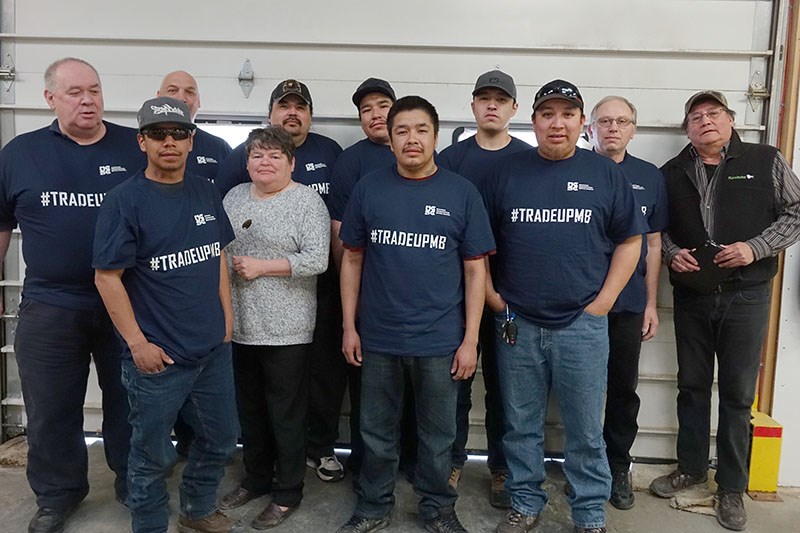Six students from remote Manitoba First Nations graduated May 16 from the first blast hole drilling training program in Canada delivered using drill simulators.
“This is the first time that simulators have actually been put in the field for people to actually use,” said Keith Taylor of the Austin Powder Company in a promotional video produced for the Manitoba Construction Sector Council. “We’ve used simulators before but they’re typically at a location of the manufacturers.”
The six students came from God's Lake Narrows First Nation, Bunibonibee Cree Nation at Oxford House, Gods River and Wasagamack, all of which are the sites of new schools being built by the federal government.
Geoff Greenfield was one of the instructors for the course.
“My specialty is more focused on the sims,” he explains. ”I was trained by a gentleman from Finland for Epiroc and Sandvik. They actually certified me to be a trainer for their machines. It’s basically like sitting in the cabs of these higher-end drills.”
There is also a mobile simulator lab in a trailer that can be transported to any community that can be reached overland.
Don Ayres taught the students about health and safety as well as the characteristics of different types of rock that need to be drilled for blasting.
“It’s important that they know what they’re drilling and how they have to adjust for different characteristics of the rocks so that they can adapt in the field when they go get on the drill. There’s a huge difference from limestone to granite. Granite’s way harder and you have to slow right down but limestone you can punch holes in it pretty quick."
In contrast to the old way of learning by doing – and trial and error – starting off on simulators is both safer and more economical.
“It takes some of the experimentation off of the field work,” Ayres says. “Lots of times they were damaging drills or they were really hard on bits, really hard on equipment. With this information, they can take it and they can adapt and run the machine properly, safely, no issues. That’s one of the benefits.”
Having completed the training, the students are now qualified to drill blast holes for roadwork, in quarries and in mining.
“It’s applicable to all three,” said Ayres.
Only one of the students in the class had any prior drill experience and most didn’t even have any equipment operating experience, Greenfield says.
Kethan North, 23, from Oxford House, said he sees this training as a way to step up into the more skilled aspects of construction from the labourer-type positions he has been working at since graduating high school.
“It seemed like a really good opportunity, thought I could make a career out of it.,” North said. “The simulator time was fun. Just getting the hang of aligning all the blast holes and just getting used to the simulator, that was challenging. I’ll definitely feel a lot more comfortable being on the drill.”
William Kirkness, Indigenous liaison of the Manitoba Construction Sector Council, says in addition to drilling skills, course like these also aid students by making them job ready to show up every day on time and to be productive.
“A lot of that is about attitude,” he said, and not coming in acting like you already know everything.
While these students had to leave their communities for training, Kirkness says a big part of his job, which includes submitting proposals for federal funding for training, involves finding Indigenous trainers who speak the local language and can provide construction skills training where students live.
“They have the family support there as well, that’s a big thing,” Kirkness says.
The blast hole drilling training program in Thompson was delivered through a partnership of the Manitoba Construction Centre Council and University College of the North, with funding provided by the provincial and federal governments and the First Nations the students belong to.




